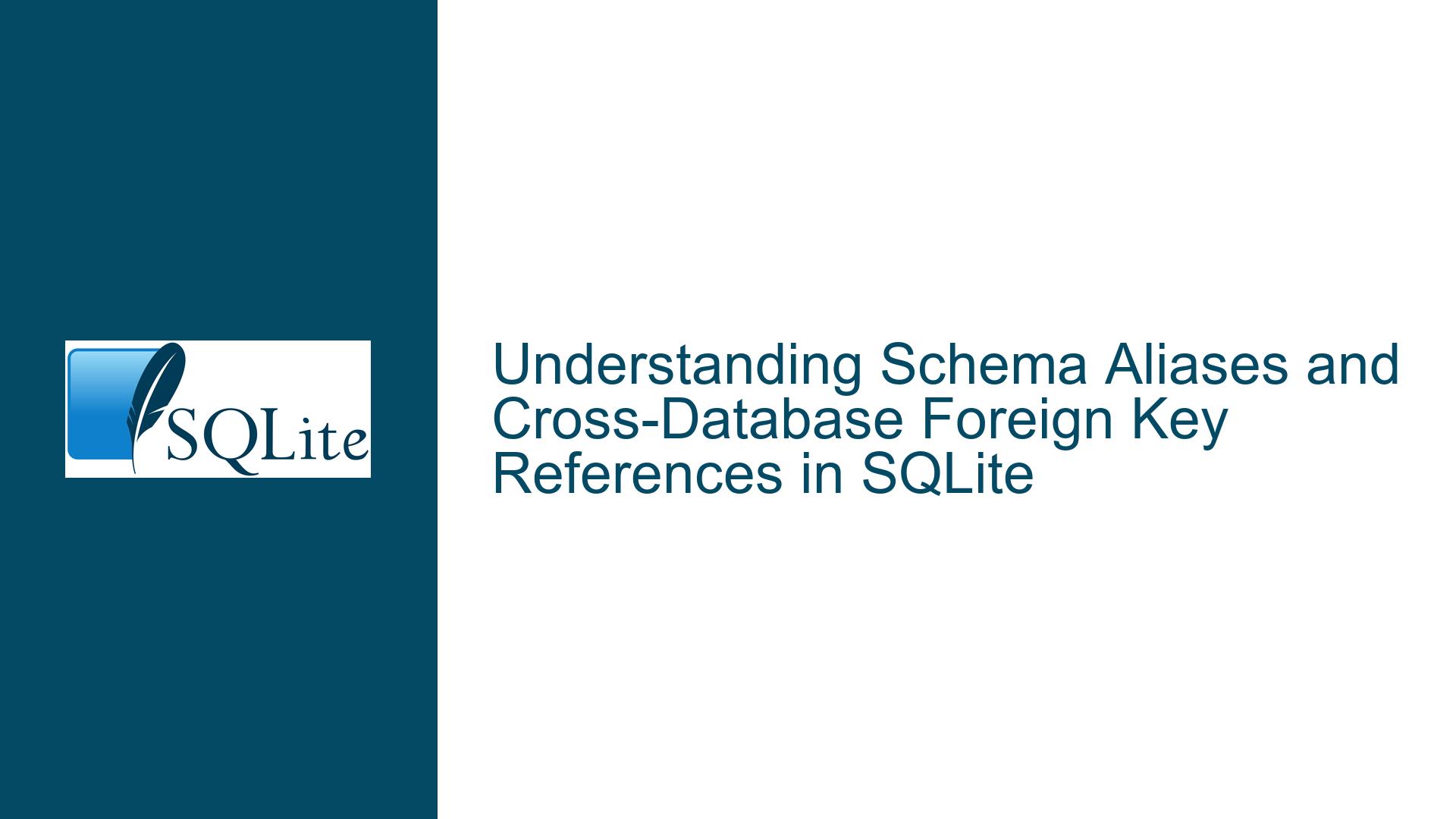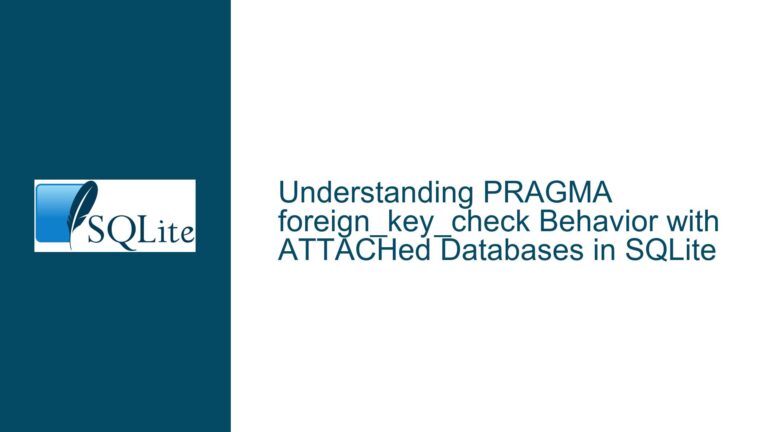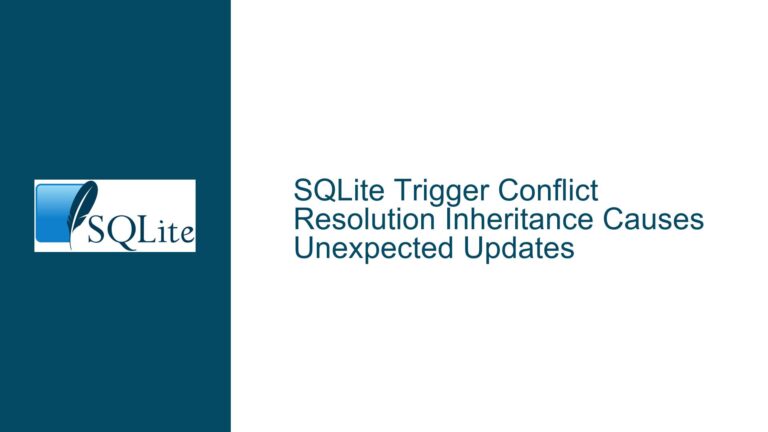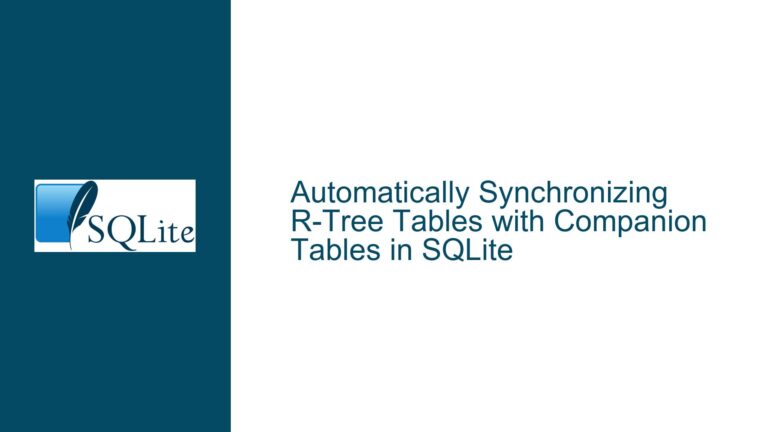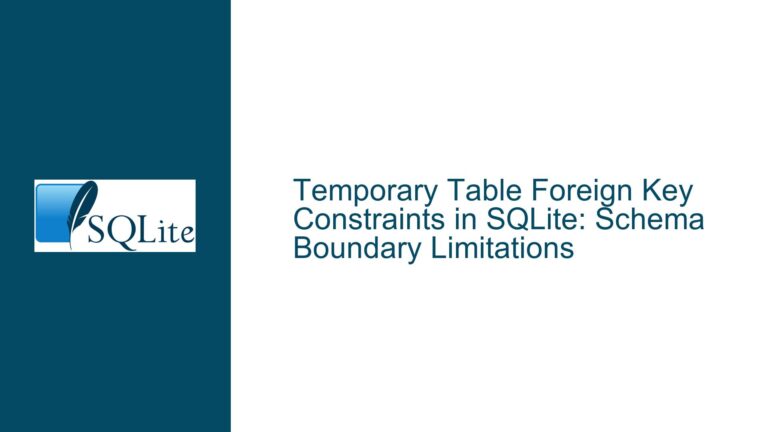Schema Aliases and Cross-Database Foreign Key References in SQLite
Issue Overview: Schema Aliases and Foreign Key Constraints in SQLite
When working with SQLite, one of the most powerful features is the ability to attach multiple databases to a single connection using the ATTACH command. This allows you to reference tables across different databases as if they were part of a single schema. However, this flexibility comes with certain limitations, particularly when it comes to defining foreign key constraints across these attached databases.
In the provided scenario, the user is attempting to create a table mc.materialCitations in the materialCitations.sqlite database, which references a table treatments in another attached database treatments.sqlite (aliased as tr). The user encounters an error when trying to define a foreign key constraint that references a table in a different database using the schema alias tr. Specifically, the error occurs when the user tries to define the foreign key as treatmentId REFERENCES tr.treatments(treatmentId).
The core issue here is that SQLite does not support cross-database foreign key references. This means that while you can reference tables within the same database using foreign keys, you cannot directly reference a table in one attached database from another attached database using a foreign key constraint. This limitation is not immediately obvious, especially when working with schema aliases, which can create the illusion that all attached databases are part of a single, unified schema.
Possible Causes: Why Cross-Database Foreign Key References Fail in SQLite
The inability to define cross-database foreign key references in SQLite stems from several underlying architectural and design decisions:
Database Isolation: SQLite is designed to treat each database file as an independent entity. When you attach multiple databases to a single connection, SQLite does not merge them into a single schema. Instead, it maintains them as separate entities, each with its own schema and data. This isolation is crucial for maintaining data integrity and performance but comes at the cost of limiting certain cross-database operations, including foreign key references.
Schema Aliases and Scope: Schema aliases in SQLite are primarily a way to disambiguate table names when multiple databases are attached. They do not extend the scope of foreign key constraints. When you define a foreign key, SQLite expects the referenced table to be within the same database. The schema alias (
trin this case) is not recognized in the context of a foreign key definition, leading to the error.Foreign Key Enforcement: SQLite enforces foreign key constraints at the database level. When you define a foreign key, SQLite needs to ensure that the referenced table and column exist and that the constraint is enforceable. This enforcement is straightforward within a single database but becomes complex when attempting to enforce constraints across multiple databases. SQLite does not have the mechanisms to enforce such cross-database constraints, hence the limitation.
SQLite’s Lightweight Nature: SQLite is designed to be a lightweight, embedded database engine. It prioritizes simplicity and efficiency over complex features like cross-database foreign key references. Implementing such features would require significant changes to SQLite’s core architecture, potentially impacting its performance and reliability.
Troubleshooting Steps, Solutions & Fixes: Handling Cross-Database References in SQLite
Given the limitations of SQLite, there are several strategies you can employ to handle cross-database references effectively:
Denormalization: One approach is to denormalize your data by duplicating the necessary information across databases. For example, instead of referencing
tr.treatments(treatmentId)inmc.materialCitations, you could copy the relevanttreatmentIdvalues into thematerialCitationsdatabase. This approach eliminates the need for cross-database foreign key references but comes with the trade-off of increased data redundancy and potential synchronization issues.Application-Level Enforcement: Another approach is to enforce foreign key constraints at the application level rather than relying on SQLite’s built-in foreign key support. This involves writing application code that checks for referential integrity before inserting or updating records. While this approach gives you more flexibility, it also requires careful implementation to ensure data integrity.
Database Merging: If feasible, consider merging the relevant tables into a single database. This approach eliminates the need for cross-database references altogether. For example, you could merge the
treatmentsandmaterialCitationstables into a single database, allowing you to define foreign key constraints directly. However, this approach may not be practical if the databases need to remain separate for other reasons.Triggers and Views: You can use triggers and views to simulate cross-database references. For example, you could create a view in the
materialCitationsdatabase that references thetreatmentstable in thetreatmentsdatabase. You could then use triggers to enforce referential integrity when inserting or updating records in thematerialCitationstable. This approach requires careful design and testing to ensure that the triggers and views behave as expected.Manual Synchronization: In some cases, manual synchronization of data between databases may be the most practical solution. This involves periodically copying data from one database to another to ensure that the necessary references are available. While this approach can be error-prone and time-consuming, it may be the only option in certain scenarios.
Reevaluating Database Design: Finally, it may be worth reevaluating your database design to determine whether the current structure is the best fit for your needs. If cross-database references are a critical requirement, you may need to consider using a different database system that supports this feature natively. Alternatively, you could explore ways to restructure your data to minimize the need for cross-database references.
Conclusion
While SQLite’s support for schema aliases and attached databases provides a great deal of flexibility, it also comes with certain limitations, particularly when it comes to cross-database foreign key references. Understanding these limitations is crucial for designing effective database schemas and avoiding common pitfalls.
By exploring alternative strategies such as denormalization, application-level enforcement, database merging, triggers and views, manual synchronization, and reevaluating your database design, you can work around these limitations and achieve your desired outcomes. Each approach has its own trade-offs, so it’s important to carefully consider your specific requirements and constraints before deciding on the best course of action.
Ultimately, the key to success with SQLite is to leverage its strengths while being mindful of its limitations. With careful planning and thoughtful design, you can build robust and efficient database solutions that meet your needs without running into the issues associated with cross-database foreign key references.
